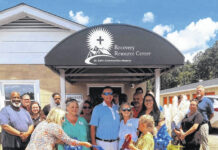“No other grazing management practice, such as the use of electric fences, feeding minerals, soil sampling, fertilization, or weed management (although important) can overcome the failure of defining an adequate stocking rate.” – Dr. Miguel Castillo
The number of livestock and the amount of pasture are two of the most critical elements to any grazing operation. The goal of the grazing operator is to find a balance between the two. The animal- to-land relationship over time is called Stocking Rate. This is often expressed as animal units per acre. We want to match the amount of forage produced with the amount of forage needed per animal.
When pastures are overstocked the result is overgrazing. There is not enough forage to feed the livestock and overtime the pasture will have bare spots. This allows weeds to invade. More supplemental feed must be purchased. When pastures are understocked, forage is underutilized. Over time forage will mature and grazing will be uneven. You will have lost potential.
Unfortunately, forage productivity is not constant; therefore, stocking rates can’t be constant. Lots of factors such as weather influence forage productivity, but cool and warm-season forages follow a distinct pattern. Tall fescue, a cool season, is most productive in the spring and fall. Bermuda, a warm season, is most productive in the summer. If the same stocking rate is kept year-round both systems will experience under and over grazing.
Year-round grazing is possible, but only with a combination of forages and management practices. To learn more about stocking rates, grazing management, or forage, contact Anson County Cooperative Extension.




